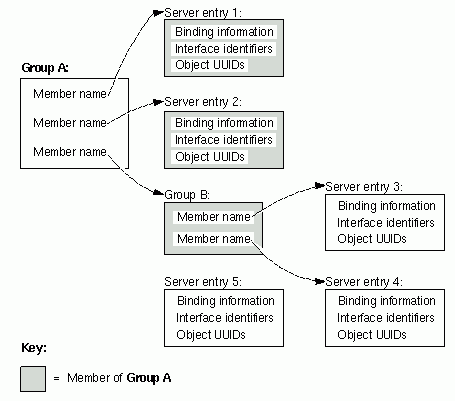
Administrators or users of RPC applications can organize searches of a namespace for binding information by having clients use an RPC group as the starting point for NSI search operations. A group provides NSI search operations (import_next or lookup_next operations) with access to the server entries of different servers that offer a common RPC interface or object. A group contains names of one or more server entries, other groups, or both. Since a group can contain group names, groups can be nested. Each server entry or group named in a group is a member of the group. A group's members must offer one or more RPC interfaces, the type of RPC object, or both in common.
The following figure shows an example of the kinds of members a group can contain and how those members correspond to database entries.
Possible Mappings of a Group

The members of Group A are Server Entry 1, Server Entry 2, and Group B. The members of the nested group, Group B, are Server Entry 3 and Server Entry 4. An additional server entry that advertises the common interface or object, Server Entry 5, is omitted from either group.